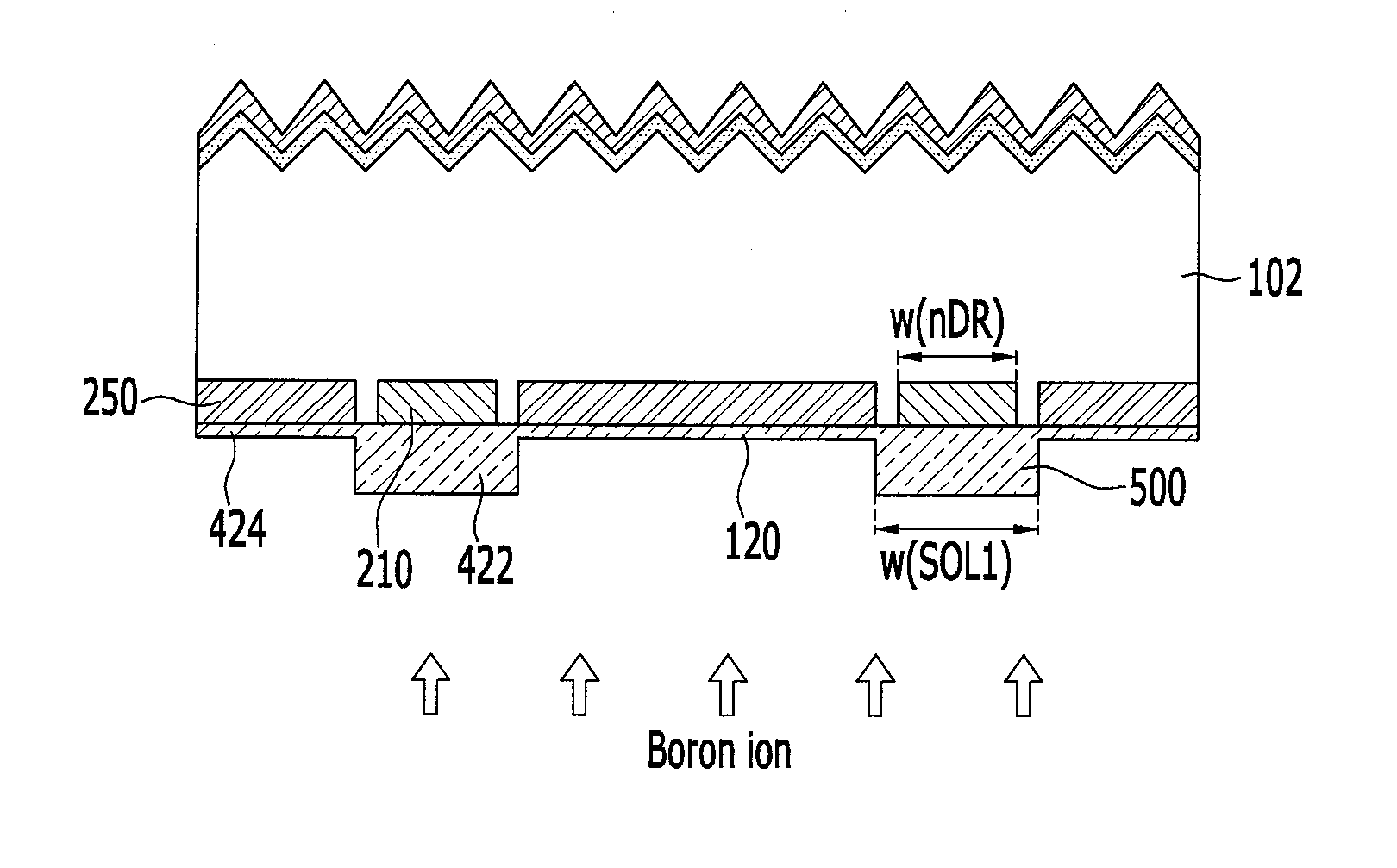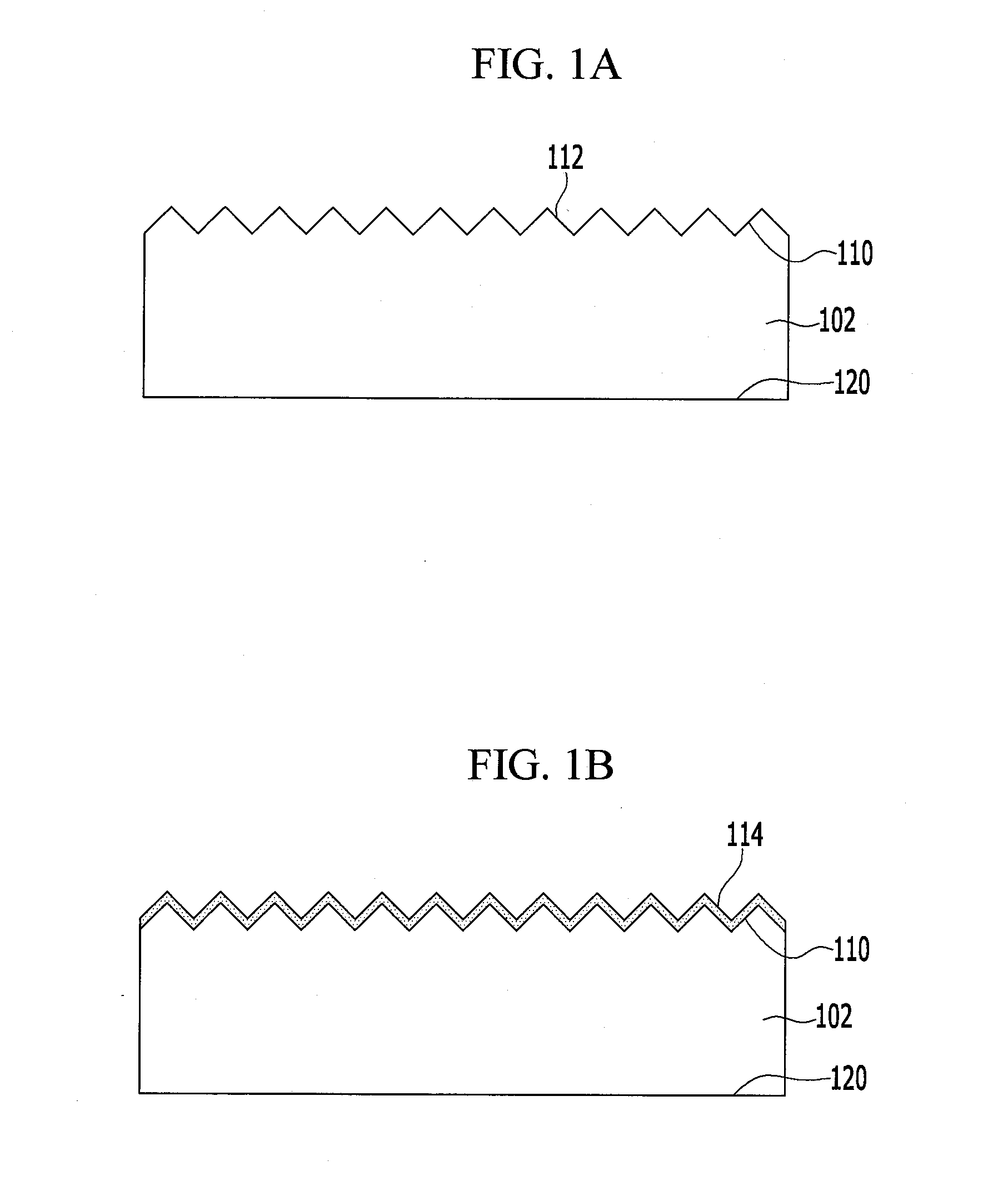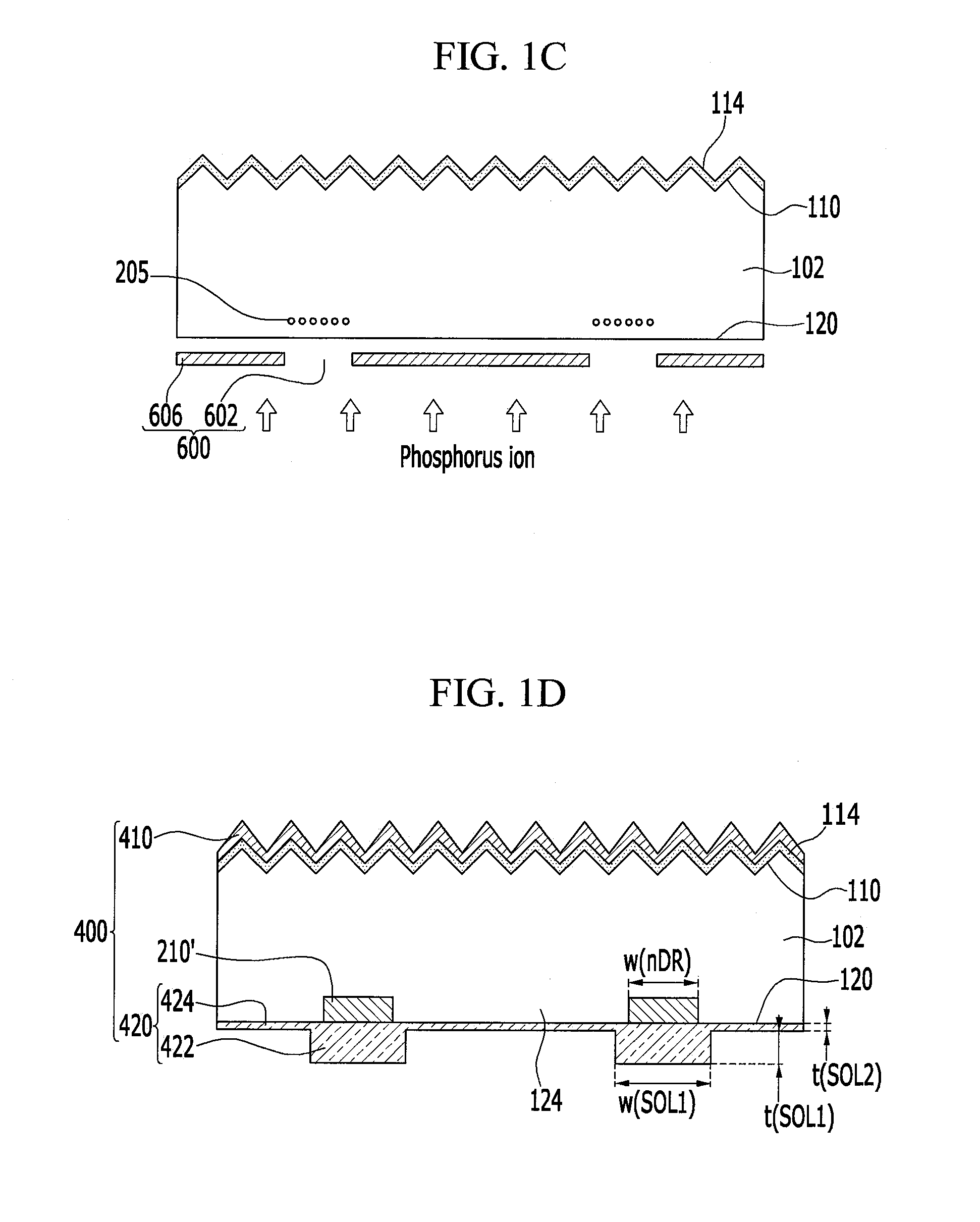Solar Cell and Manufacturing Method Thereof
a technology of solar cells and manufacturing methods, applied in the field of solar cells, can solve the problems of deteriorating solar cell use efficiency and complicating processes of solar cells, and achieve the effects of improving solar cell efficiency, saving manufacturing time and cost, and simplifying the manufacturing process
- Summary
- Abstract
- Description
- Claims
- Application Information
AI Technical Summary
Benefits of technology
Problems solved by technology
Method used
Image
Examples
Embodiment Construction
[0054]A manufacturing method of a solar cell according to exemplary embodiments of the present invention will be described with reference to the accompanying drawings. Like reference numerals designate like parts and elements throughout the specification and the drawings. Further, various values are used in exemplary embodiments of the present invention, but the values do not limit the scope of the appended claims unless they are included within the spirit and scope of the appended claims.
[0055]FIG. 1A to FIG. 1G are schematic cross-sectional views of processes for manufacturing a back contacting solar cell according to an exemplary embodiment of the present invention. Layers formed in front and back surfaces of a substrate are formed through the respective processes. According to an aspect of embodiments of the present invention, a silicon oxide layer grown on a surface of doped regions in the back surface of the substrate is thicker than a silicon oxide layer grown on an undoped r...
PUM
 Login to View More
Login to View More Abstract
Description
Claims
Application Information
 Login to View More
Login to View More - R&D
- Intellectual Property
- Life Sciences
- Materials
- Tech Scout
- Unparalleled Data Quality
- Higher Quality Content
- 60% Fewer Hallucinations
Browse by: Latest US Patents, China's latest patents, Technical Efficacy Thesaurus, Application Domain, Technology Topic, Popular Technical Reports.
© 2025 PatSnap. All rights reserved.Legal|Privacy policy|Modern Slavery Act Transparency Statement|Sitemap|About US| Contact US: help@patsnap.com



